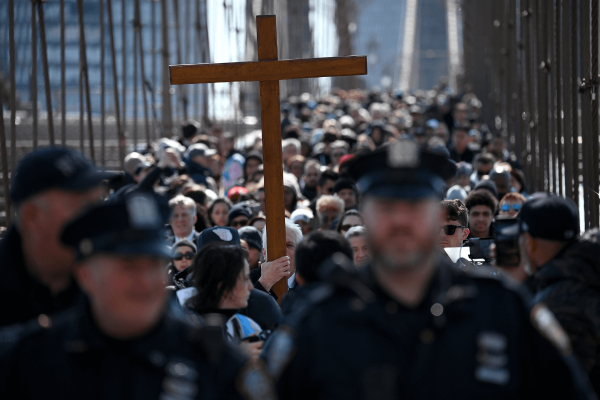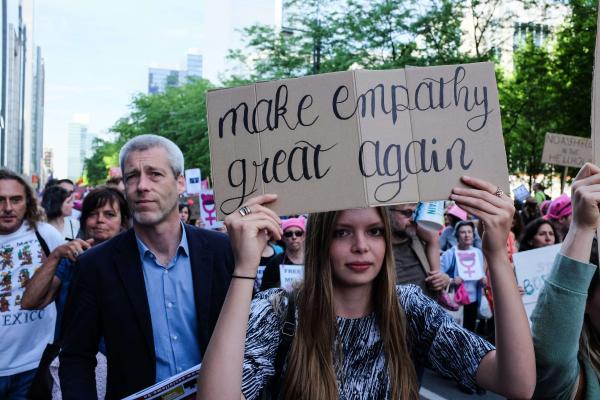I remember the first mission trip that I went on. My youth group spent a week in New Orleans helping a local missionary group run a Vacation Bible School for neighborhood kids. Our objective, we were told, was simple: bring Jesus to a place where he was desperately needed but was often rejected. The implication that I drew, at 15 years old, was that the poverty and the street-side memorials for victims of gun violence I was seeing, and the seeming absence of almost any man over 30, existed because this community had rejected Jesus. If only Jesus were in their hearts, everything would be different.
To fix these problems, our group came to offer Jesus. So did the group after us. And the group after them. And a dozen more groups after that. And then we came again the following year, and again the year after that. In total, I went to New Orleans three times as a high school student and each time I did, a missionary told me about all the good work that groups like ours had been doing in the past year, about how we were changing lives, and about how a real revival was right around the corner.
Yet, every year my group worked with the same kids who still lived in poverty, still didn’t have fathers, still witnessed drug use, and still feared gun violence. We were assured that change was coming. It was just a slow process. But, after three years, I couldn’t help but wonder: If people accepting Jesus as their savior was the solution, then why was it taking so long for things to change? If accepting Jesus led to prosperity, then why wasn’t the entire neighborhood lined up at the church’s door, waiting to profess their commitment to Christ?
By asking these questions, I began to see that we were missing the mark, that we were misconstruing both the problem and the solution. The reality, I came to learn, is that this New Orleans community – like many in our country – isn’t afflicted with poverty, drugs, incarceration, and gun violence because it has rejected Jesus. That’s not the problem. Instead, its plight is the result of two centuries of discrimination and injustice leveled against black people.
Theologian James Cone sums up the problem this way: “the history of the black-white relations in this country from the Civil War to the present unmistakably shows that as a people, America has never intended for blacks to be free.” He’s right. Although slavery ended with the 13th amendment in 1865, it was quickly replaced with Jim Crow, segregation, lynching, voter suppression, and other forms of injustice. In the 1960, the Civil Rights and Voting Rights Acts were passed, ending segregation and state-sanctioned voter suppression, but discrimination lived on.
According to a 2017 study:
African Americans report extensive experiences of discrimination across a range of situations. In the context of institutional forms of discrimination, half or more of African Americans say they have personally been discriminated against because they are Black when interacting with police (50 percent), when applying to jobs (56 percent), and when it comes to being paid equally or considered for promotion (57 percent).
Discrimination is real. Black people working the same jobs are paid less than their white peers, are more likely to be pulled over by traffic cops and are incarcerated at higher rates than white people. According to the Pew Research Center, in 2017, there were 1,549 black prisoners for every 100,000 black adults – nearly six times the imprisonment rate for whites.
When my youth group blamed a community’s problems on its rejection of Jesus, we failed to see the gospel, in James Cone’s words, as an “immanent reality – a powerful liberating presence among the poor right now in their midst, ‘building them up where they are torn down and propping them up on every leaning side.’”
We stripped the gospel of its liberating core and blamed the oppressed for their oppression. If we had seen the gospel as the immanent reality that it actually is, we would have addressed the bigger systemic issues that perpetrated the inequality that we were witnessing. We would have talked about the long-term effects of Jim Crow and segregation, about how these institutions disadvantaged black communities and prevented any upward economic mobility for decades. We would have talked about how slavery and Jim Crow were replaced by mass incarceration. We would have talked about how implicit bias affects our everyday lives. But we never spoke about these issues because doing so requires more than words, more than “Jesus loves you.” Fixing injustice requires long-term systemic change. And the truth is that it’s easier to pretend that discrimination, inequality, and systemic injustice don’t exist than to address them.
As a youth pastor today, it’s my goal to craft experiences that don’t conceive of our youth as healers “bringing Jesus” to a place that desperately needs him. Jesus is already present. Rather, what I want our students to see is that travel is meant to change and enlighten them. I want them to learn that they aren’t the solution to another community’s problems. I want them to learn that the people doing meaningful and lasting work live in a community year-round. Most importantly, I want them to learn about the systemic injustices that cause the inequality we encounter in the communities we travel to.
Communities that suffer because of systemic injustice do not do so because they have rejected Jesus. So, “bringing Jesus” to a community will not abate suffering. Rather, communities suffer because humans – often Christians – in positions of power have failed to “do justice, love mercy, and walk humbly with” their God (Micah 6:8). Opening the eyes of young people to the real problems that communities face is a step in the right direction. This is the work that produces meaningful change.
Got something to say about what you're reading? We value your feedback!







